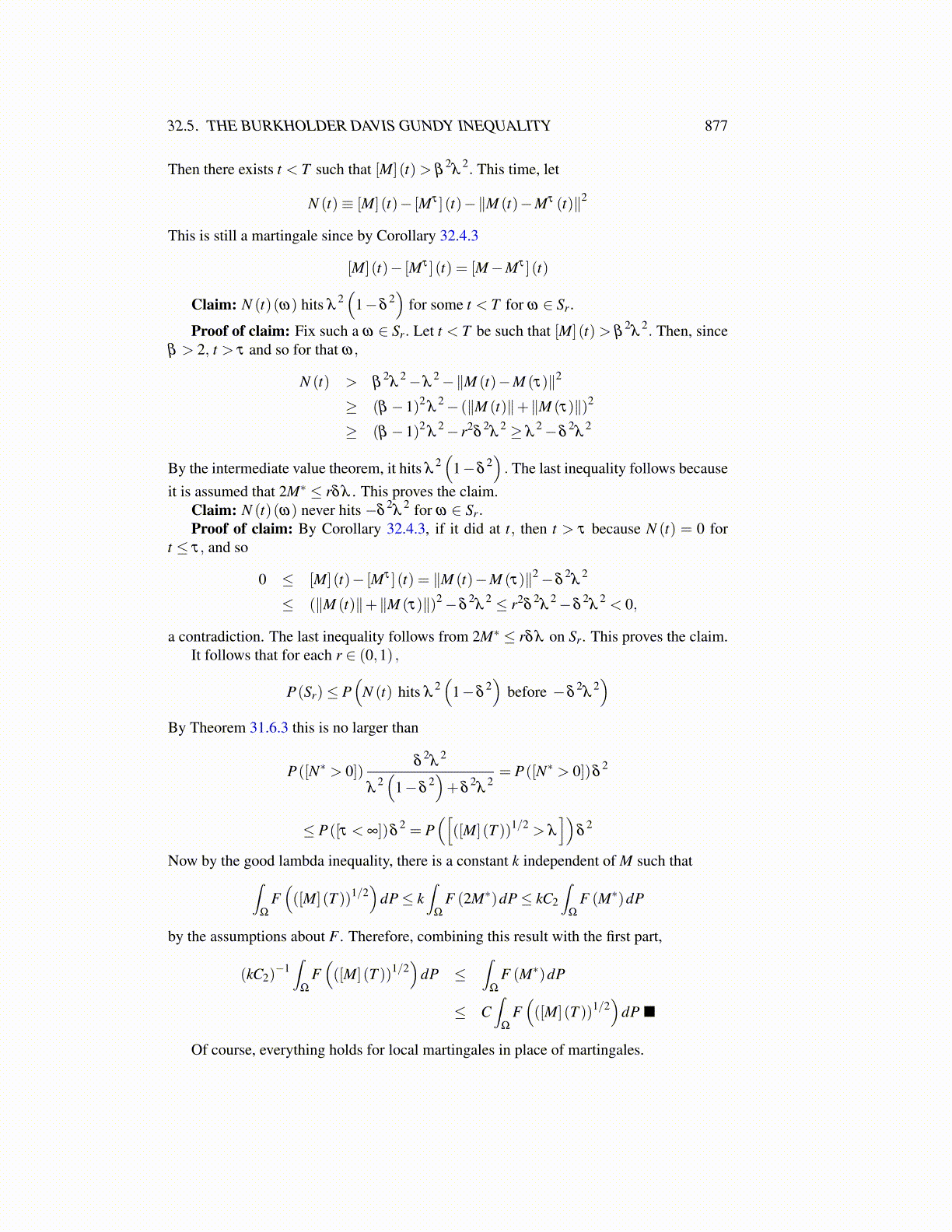
32.5. THE BURKHOLDER DAVIS GUNDY INEQUALITY 877
Then there exists t < T such that [M] (t)> β2λ
2. This time, let
N (t)≡ [M] (t)− [Mτ ] (t)−∥M (t)−Mτ (t)∥2
This is still a martingale since by Corollary 32.4.3
[M] (t)− [Mτ ] (t) = [M−Mτ ] (t)
Claim: N (t)(ω) hits λ2(
1−δ2)
for some t < T for ω ∈ Sr.
Proof of claim: Fix such a ω ∈ Sr. Let t < T be such that [M] (t)> β2λ
2. Then, sinceβ > 2, t > τ and so for that ω,
N (t) > β2λ
2−λ2−∥M (t)−M (τ)∥2
≥ (β −1)2λ
2− (∥M (t)∥+∥M (τ)∥)2
≥ (β −1)2λ
2− r2δ
2λ
2 ≥ λ2−δ
2λ
2
By the intermediate value theorem, it hits λ2(
1−δ2). The last inequality follows because
it is assumed that 2M∗ ≤ rδλ . This proves the claim.Claim: N (t)(ω) never hits −δ
2λ
2 for ω ∈ Sr.Proof of claim: By Corollary 32.4.3, if it did at t, then t > τ because N (t) = 0 for
t ≤ τ, and so
0 ≤ [M] (t)− [Mτ ] (t) = ∥M (t)−M (τ)∥2−δ2λ
2
≤ (∥M (t)∥+∥M (τ)∥)2−δ2λ
2 ≤ r2δ
2λ
2−δ2λ
2 < 0,
a contradiction. The last inequality follows from 2M∗ ≤ rδλ on Sr. This proves the claim.It follows that for each r ∈ (0,1) ,
P(Sr)≤ P(
N (t) hits λ2(
1−δ2)
before −δ2λ
2)
By Theorem 31.6.3 this is no larger than
P([N∗ > 0])δ
2λ
2
λ2(
1−δ2)+δ
2λ
2= P([N∗ > 0])δ
2
≤ P([τ < ∞])δ2 = P
([([M] (T ))1/2 > λ
])δ
2
Now by the good lambda inequality, there is a constant k independent of M such that∫Ω
F(([M] (T ))1/2
)dP≤ k
∫Ω
F (2M∗)dP≤ kC2
∫Ω
F (M∗)dP
by the assumptions about F . Therefore, combining this result with the first part,
(kC2)−1∫
Ω
F(([M] (T ))1/2
)dP ≤
∫Ω
F (M∗)dP
≤ C∫
Ω
F(([M] (T ))1/2
)dP ■
Of course, everything holds for local martingales in place of martingales.